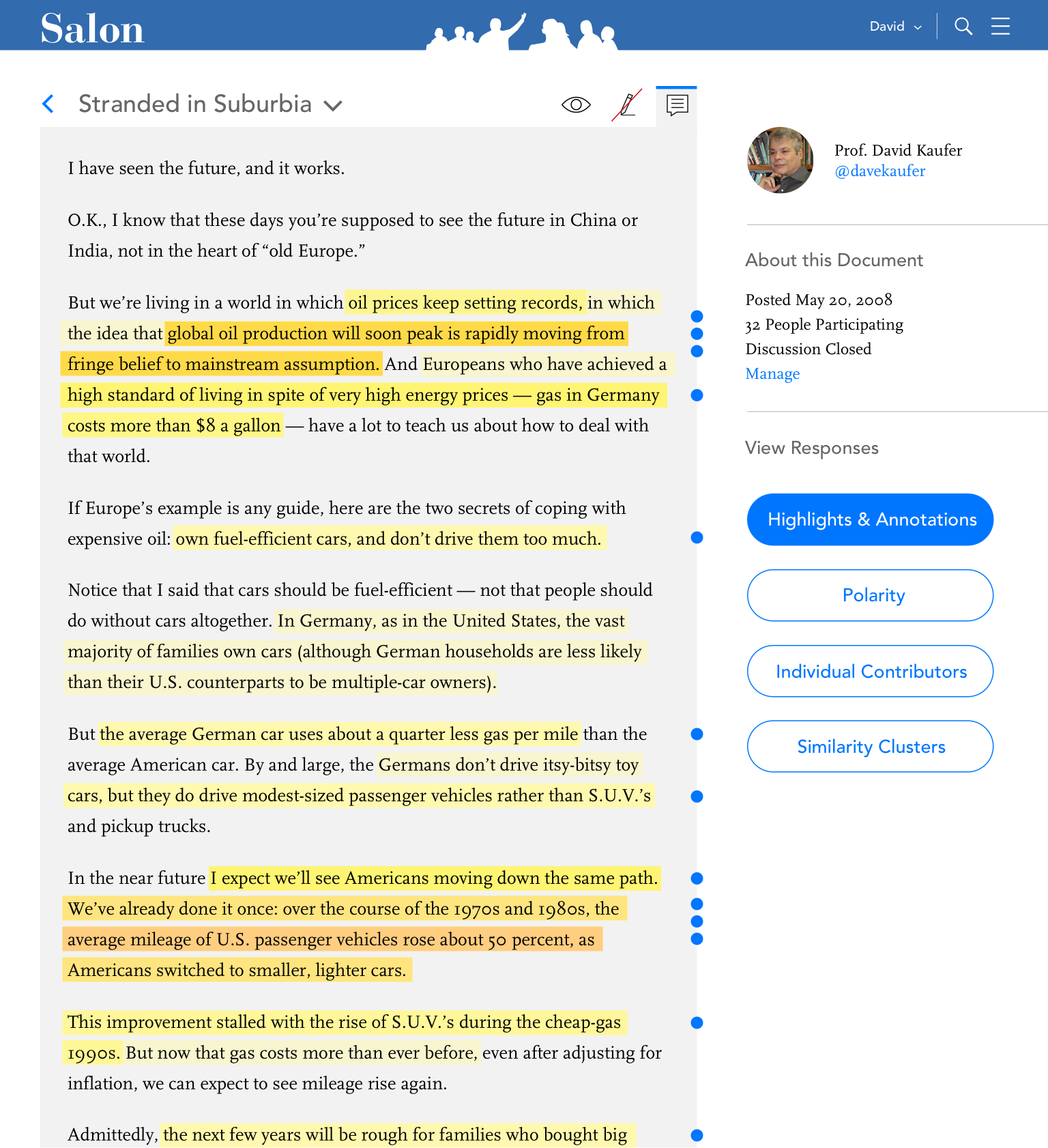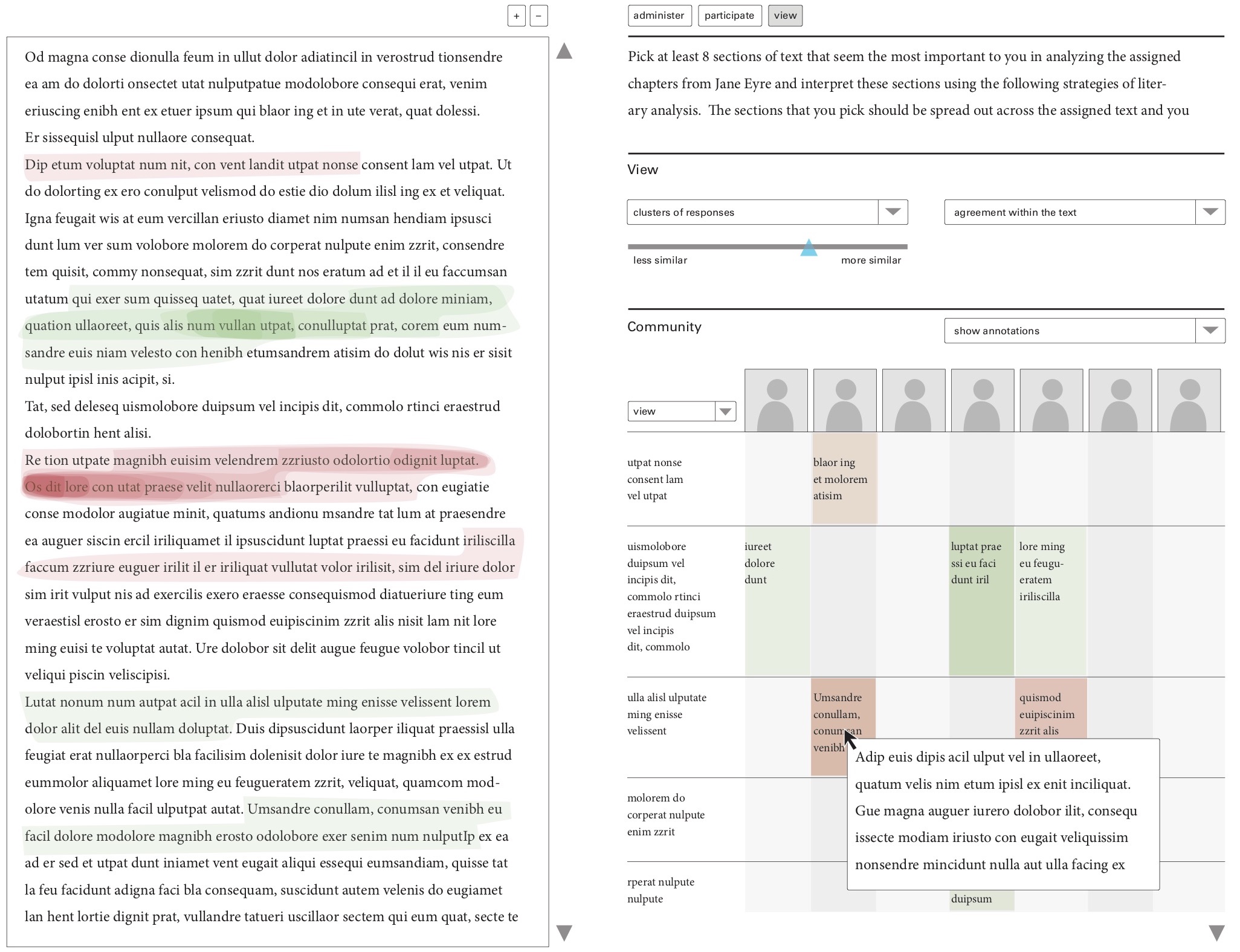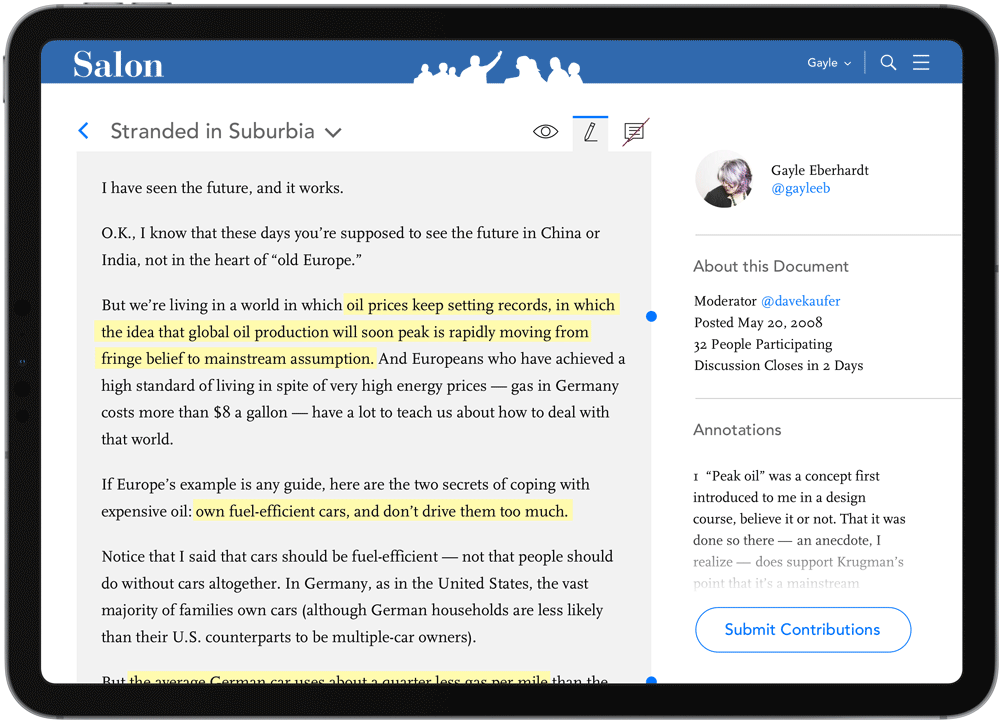Classroom Salon
Classroom Salon was a social learning environment that created communities of readers from individual contributions. Teachers could upload long-form texts (e.g., a chapter of literature for homework, technical or scientific articles, news stories or editorials) and students read and annotate the texts individually. All the contributions were aggregated to produce a variety of visualizations, summaries, and statistics to help the knowledge worker get an immediate understanding of community perception.
The platform was adopted in humanities classrooms and later STEM classrooms to moderate in-class interactions. By 2015, there were more than 20,000 registered users. It was later spun out of the university and the academic tools were sunsetted.
Roles: Co-founder, design research, conceptual development, planning and prototyping, user experience and interface design, usability studies, development team oversight, and grant writing.
Grants: Google, the Bill and Melinda Gates Foundation, National Science Foundation, Heinz Endowment, and Innovation Works. Classroom Salon is a project of Carnegie Mellon University.
Collaborators: David Kaufer, Ananda Gunawardena, Joanna Wolfe, and Jacobo Carrasquel






Classroom Salon’s tools and visualizations were designed for individual study and group learning. In the classroom, instructors project student work through Classroom Salon, using it as a tool to drive discussion.
This reduces cognitive load on students and the instructor, building discussion groups far faster than traditional discourse environments.

Choose Salons from a variety of topics, all of which are populated with texts for reading and discussion.

Skim through active Salons, respond to comments, and easily find trending discussions.

A Paul Krugman article was studied for concentrations of interest and controversy. Through natural language processing and DocuScope, a tool developed by co-founder David Kaufer, hotspots and political leanings were identified in participants’ comments.

For a set period of time, participants work on their own, reading, highlighting, and commenting.

After the document is closed for comment, teachers can project the results in class, treating the text as an artifact, not unlike a design course pin-up. Instructors can quickly identify hotspots, controversy, similar thinking, misunderstanding, and more.

Here, a discussion can focus on points of disagreement.

By projecting the living document, teachers were able to turn student homework into active discussion.

Process and Research
Preliminary research methods conducted from 2007 to 2009 included literature reviews, paper prototyping sessions, interviews and directed storytelling, all of which led to early stage development work led by Ananda Gunawardena, David Kaufer, and myself with a team of undergraduate information systems students led by Raja Sooriamurthi.






Process work included user flow explorations, type explorations for readability on screen, wireframes for testing and patent filings, and a simplified version for the first iPads. “Responsive” was not yet a format but that is effectively what these prototypes were.